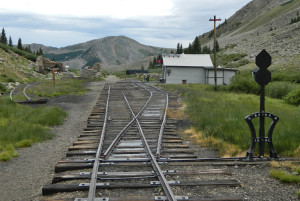By John Mattingly
The effort by San Luis Valley water users to self-regulate – and sustainably manage – the surface and groundwater systems of the Valley with sub-districts is now approaching a decade in process.
In 2004, Senate Bill 04-222 and HB-1198 basically offered Valley water users a carrot and stick: either come up with a system of sub-districts that restored the Valley’s aquifers to levels seen in the base period – 1978 through 2000 – and then manage the Valley’s aquifers sustainably thereafter, or submit to command-and-control rules and regulations from the state.
Given the budget constraints of the State Engineer’s office, the state hoped water users would come up with their own management and sustainability plan, and water users understood that, in theory, they would get a better regulatory regime if they met the terms of the 2004 legislation with subdistricts, each tailored to the particulars of that subdistrict’s unique hydrology. But any optimism about consensus among water users is slowly draining, as are the Valley’s aquifers.
It’s easy, fashionable and in some cases justified to blame the lawyers. But before we do that, several things should be considered.
1. The over-pumping of San Luis Valley aquifers is partly the result of a decision by the state to issue well permits in response to (a) the need for a season-long irrigation supply that was better served by groundwater; (b) a shift in the administration of Valley water rights in the early 1980s that favored optimum utilization over vested rights; and (c) policy assumptions regarding recharge that were simply wrong.
While it is true that attorneys were involved in the case law that shaped need, administration and policy, the attorneys were representing clients who got what they wanted – to the extent that, in some cases, well permits were issued for irrigation with limits on gallons per minute per twenty four hours, but no limit on how many acre feet could be pumped in a season. This bundle of policy misjudgments by the state will not be viewed kindly by history.
2. A consistent feature of Colorado water issues is confusion about the rules. It’s sort like American football. The rules are so numerous and complex that longtime fans of the game don’t understand some of the calls, and even the officials are frequently confused. American football is a game dominated by the officials, and is reflective of America’s undying affection for rules. Entire games hinge on the call of a single referee – a call that, if challenged, requires an “official” viewing of the play in ultra slow motion a dozen times or more to establish a very fine point of action. The same is true in water rights administration: lots of complex rules, and domination of the process by the officials.
3. To deal with the officials, water users are encouraged, if not forced, to engage attorneys who specialize in the rules. The complexity of the rules in Colorado water law requires attorneys who have mastered particular areas of specialty, areas now spreading out like bindweed over the legal landscape. If you have a water issue and seek legal representation, you’d better get a lawyer who specializes in that particular aspect of water issue, or it will be like going to a proctologist for an earache. And the result will be similarly painful and embarrassing.
To really understand what is going on in the “San Luis Valley’s water restoration and sustainability” situation today, I suggest that you read: (1) Senate Bill 04-222 and House Bill 1198; (2) CRS 37-92-102, 501 and 502; (3) Case 04CW24, (4) Case 07CW52 and Case 06CV64; (5) The Last Ranch by Sam Bigham; and finally, (6) Any good book on the principles of groundwater modeling, such as Groundwater Modeling in Arid and Semi-Arid Areas by Wheater, Mathais, Xin Li (2010).
Most people involved have read selected parts of the above list, remembering those parts that favored their position; or they may have heard someone offer an opinion on what these laws, cases and readings mean; or they may even disagree with the required reading list, but few have had the time or inclination to take it all in. But if they were offered $400 an hour to do so, they probably would, which is what lawyers do. After all, they get paid to read what most of us don’t or won’t read, and for that, they really should not be blamed.
4. A curious irony of the restoration and sustainability mandate in the 2004 legislation was that a number of passive landowners looked around their farms and then activated old irrigation wells that they otherwise would not have activated, fearing that pending rules and regulations could eliminate their water rights. Add to this the old rush-to-pump irony. For example, an irrigator sees a neighbor pumping, and therefore pumps, which causes the neighbor to pump more. Even though they are pumping to mutual extinction, they continue to pump.
Though I have exaggerated these ironies for emphasis, the underlying point is that most water users in the West have an extractive “use it or lose it” mentality when it comes to water rights, because conservation is not rewarded by the structure of Colorado water law. Conservation can actually result in a reduction of a water right if/when a water user changes or sells the water right. Under current law, the best way for a water user to benefit from a conservation practice is to find a way to expand the use of his or her own water right at the expense of other water users. (This can, and has, been done, but this article is not the place to explain the various ways.) Again, lawyers cannot be blamed for these structural biases in the law.
5. Finally, attorneys are in a lose-lose situation most of the time. People engage an attorney because they have either a problem or a prospect. It’s part of the attorney’s job to disclose the full range of possible negative outcomes, because if one of those negative outcomes actually happens, and the client was not informed of that specific possibility, the attorney will be dipped directly in kimchi.
On the other hand, if the attorney points out positive and happy things that could happen, and they do happen, the attorney is seldom swimming in champagne, because the client knew it all along: the client came to the attorney to verify the obvious. Only when the attorney is informed by the client of negative outcomes, and the attorney then points out even more negative possibilities, but then manages to somehow turn them all positive and happy, does the attorney receive any appreciation, a rare occurrence.
So, attorneys have an incentive, and therefore, a tendency, to prolong the time it takes to resolve a problem, because it’s in the attorney’s job description to do so. But few people read their attorney’s job description. If they did, they would understand that significant chunks of what emerges from legal counsel should simply be discounted or discarded.
The swarm of attorneys in the San Luis Valley water situation is not the problem. The attorneys are a symptom of the general confusion over rights, rules and jobs, and the human tendency to cooperate only if/when it becomes the only option. Until cooperation is the last option standing, many water users will continue to make rational decisions that will turn out to be in their own worst interest. And their attorneys will be there, representing them.
John Mattingly cultivates prose, among other things, and was most recently seen near Creede.




